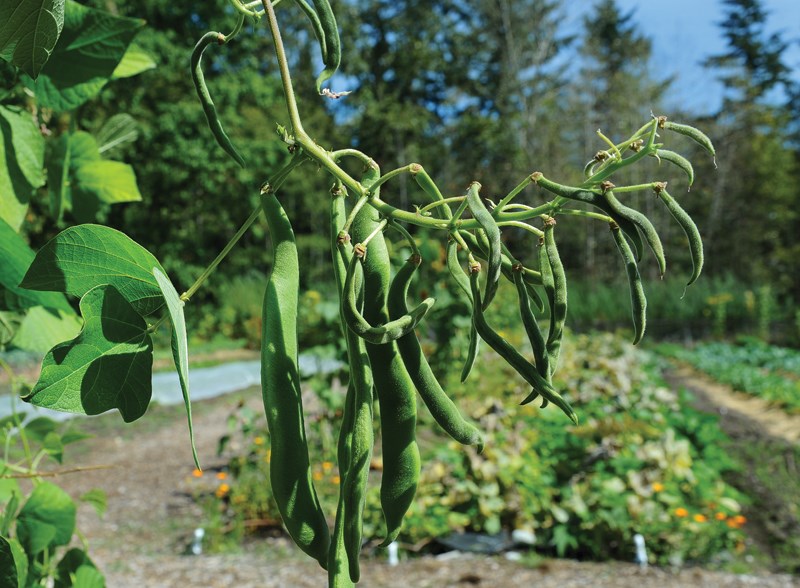Wet and cold would be a good description for this spring.
From what I’ve heard the cold winter wiped out sprouting broccoli, arugula, and most other hardy greens in gardens across the North Shore. Komatsuna and some other hardy Asian greens did manage to survive the snow. What survived in your garden?
If your cold frames collapsed under the weight of snow, now would be a good time to rebuild them and try direct-seeding hardy greens or radish. If you’ve never experimented with cold frames or cloches, this is an excellent spring to try them out. You’ll be able to start direct seeding earlier and with more success in this chilly weather.
Without a cold frame or cloche, I would say the soil is still too cold for directing seeding. The exception is peas. Peas can handle cold temperatures, but it will take longer than usual for them to germinate.
Peas are a great crop to start with if you want to increase the production of your veggie patch this year by using succession planting techniques.
Succession planting is when you plant smaller batches more frequently, extending your harvest over a longer period of time. Peas can be planted about a month or so apart from early spring until late June for a continuous harvest into the fall. However, peas generally struggle in the heat of the summer and are more susceptible to enation virus, which is spread through aphids. To avoid this, choose a variety of pea that is resistant to enation virus.
Incorporating compost or amendments into your garden if your soil is still sodden will damage the soil structure. If it’s that wet at your place it’s not worth disturbing the soil. You will take out the air pockets in the soil and compact it, which will reduce the soil microbiology and the health of your soil.
A small hoop house, cold frame, or cloche will help warm up and dry out your soil much sooner (another good reason to add one to your garden).
If you’re relatively new to growing food in your backyard or community garden plot, this spring may feel unreasonably cold. The last two springs have been early and exceptionally warm.
This year is closer to what a “normal” spring on the coast is like. The Farmers’ Almanac predicts a cool spring, but very hot summer for 2017.
Despite how it feels right now, this is good news for our veggie gardens. I’ve found that although the cool spring can be disheartening, as soon as the soils warm up the crops will go into a fast growth spurt and catch up.
Emily Jubenvill grew up on the North Shore and is passionate about growing organic food. When she’s not in the garden you’ll find her on a mountain or by the sea. She works for the North Shore Neighbourhood House’s Edible Garden Project. [email protected]



